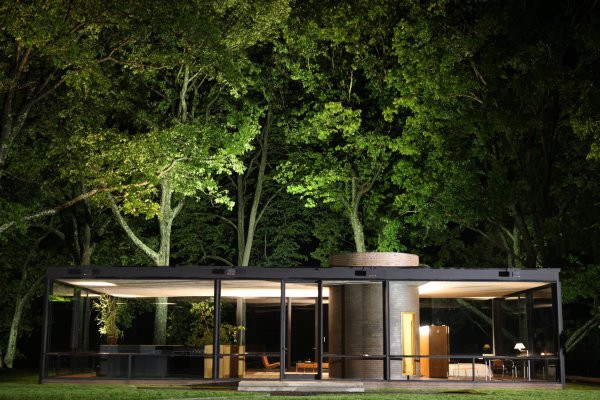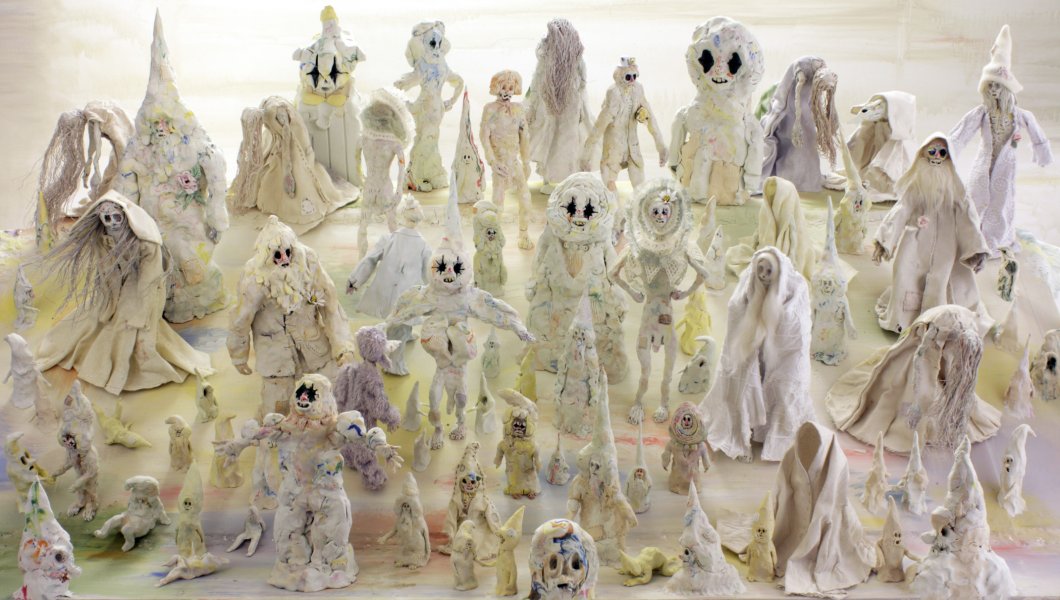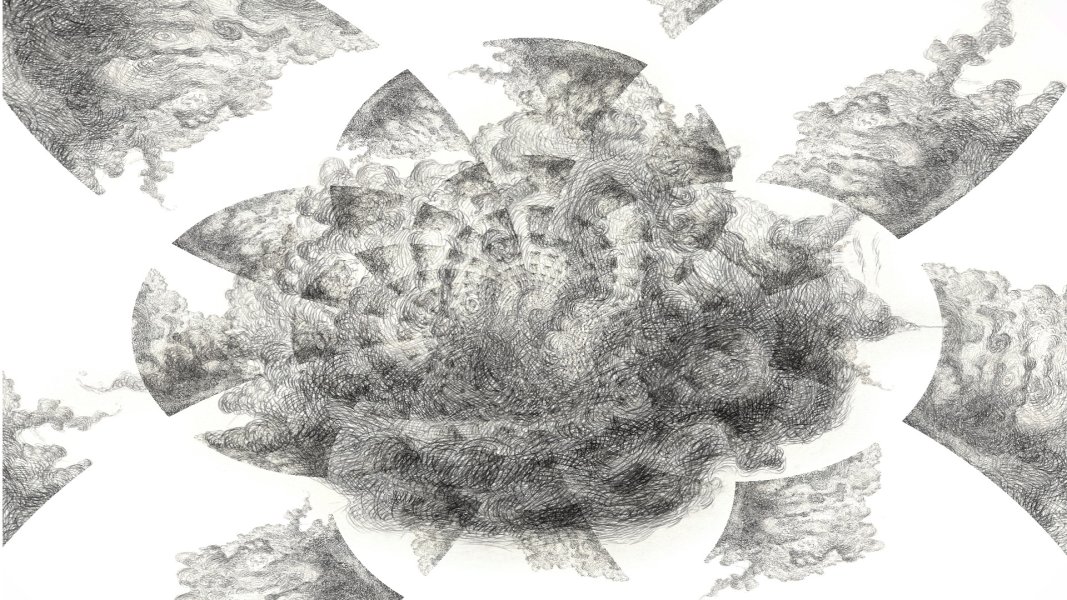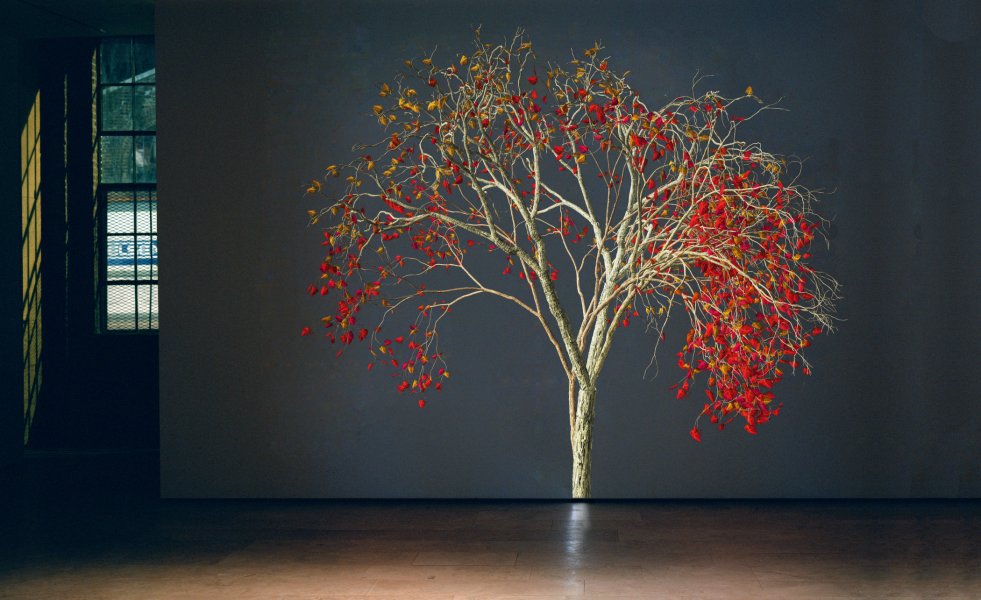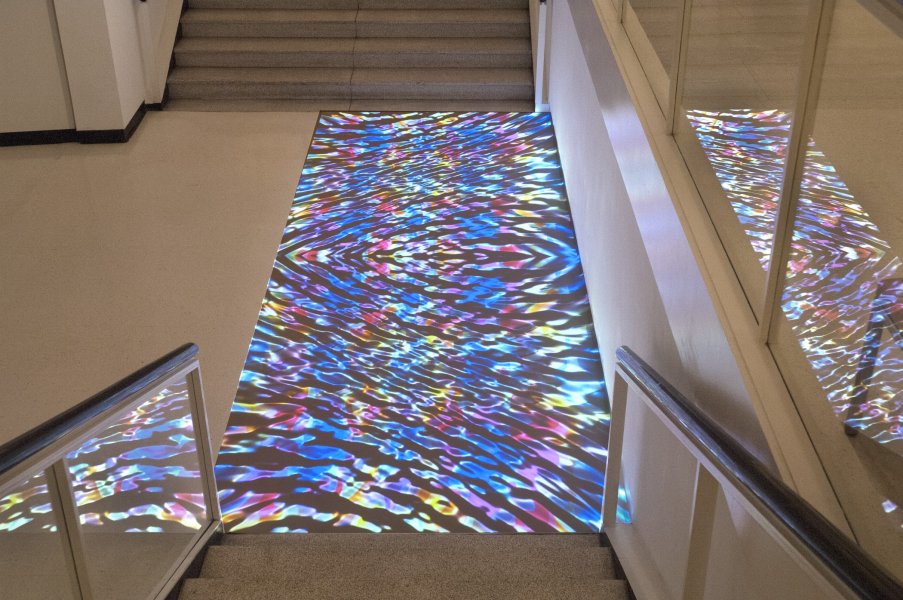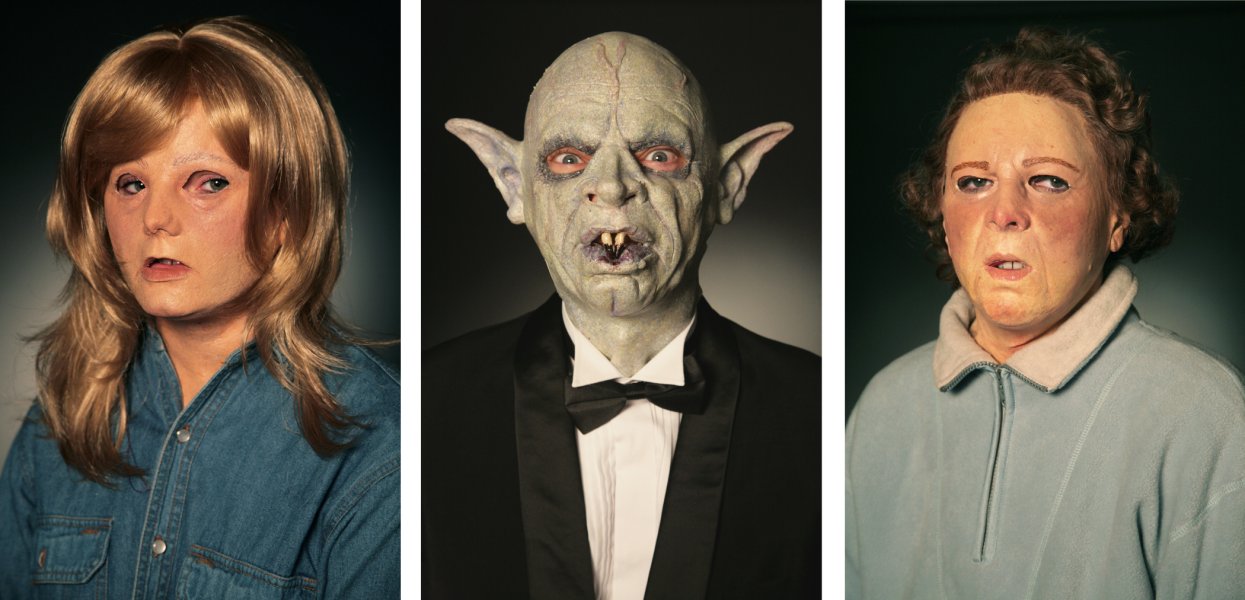On the occasion of Women’s History Month, and in conjunction with the National Museum of Women in the Arts’ fifth annual #5WomenArtists campaign, we're highlighting five women artists associated with the Albright-Knox each week this month. Today we focus on artists who work in film, video, and new media.
To create Points on a Line, Sarah Morris spent several months on site filming Ludwig Mies van der Rohe’s Farnsworth House, 1949–51, and Philip Johnson’s Glass House, 1949. Since their construction, these two homes have become icons of midcentury modernist architecture in the United States. By juxtaposing footage of the two structures, Morris aimed to capture what she has described as their “intellectual and design resonance” as well as more intangible elements of atmosphere in how the buildings relate to their settings.
Set to the resonant baritone and dreamy orchestration of Scott Walker’s “It’s Raining Today,” Allison Schulnik’s uncanny animation Mound features a twisting, stretching, and oozing horde of misfits. Producing this macabre ballet was a hugely labor-intensive process for the artist, who paints and sculpts in addition to her work with video. Featuring more than one hundred hand-sculpted and hand-sewn puppets, the work took Schulnik nearly eight months to complete.
Anne Spalter has forged a unique career path by uniting her interests in artmaking and mathematics. Over the past decade, she has developed custom software to transform source footage of everyday experiences—such as riding an amusement park roller coaster—into kaleidoscopic, animated landscapes. In Fracture, Spalter used her software to transform her drawings into animated imagery that subtly morphs before our eyes.
Since the late 1980s, Jennifer Steinkamp has applied her training in motion graphics and computer animation to create a range of installations often relating to the natural world. The museum’s collection includes three of Steinkamp’s projections: Dervish 1 and Dervish 13, which feature photorealistic simulations of swaying, seasonally changing trees, and Untitled, which resembles a watery surface pulsating with rainbow refractions.
To recruit subjects for Secrets and Lies, Gillian Wearing placed an online advertisement looking for volunteers to “confess all on video.” In order to protect the anonymity of the respondents, each wears a rubber mask. With their identities concealed, the participants were empowered to speak their truths, revealing the disparities between public and private presentation and the ways in which these are shaped by societal taboos, fear, and self-awareness.
